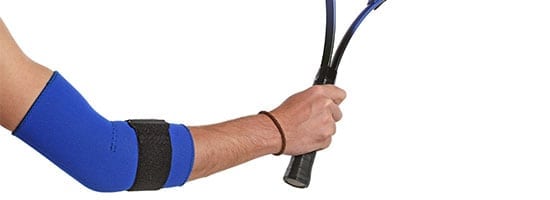
Risk Factors of Tennis Elbow
Often resulting from overuse or repetitious motions, tennis elbow (lateral epicondylitis) is a condition affecting forearm muscles. Despite the name, it’s not solely linked to tennis. Tendons supporting forearm muscles located on the outside of the elbow become inflamed or damaged to some extent, often resulting in pain along the outside of the elbow that’s further aggravated by movement.
Risk Factors and Symptoms
Tennis elbow develops due to gradual wear and tear of the extensor carpi radialis brevis (ECRB) muscle as it bends and straightens with each movement of the forearm. Risk factors include repetitious recreational or workplace activities and having arthritis or another existing condition that may lead to inflammation or muscle irritation. Often developing without any related injury, symptoms include:
- Pain along the outer part of either elbow
- Burning sensations
- Weakened grip strength
Who Gets Tennis Elbow?
The condition occurs most often in individuals between the ages of 30 and 50. In some cases, the condition develops without overly repetitious activity, although this is rare and it’s not known why this happens. It’s the groundstroke, involving a backhand or forehand motion, that often causes tennis elbow to develop when its related to its namesake sport, although anyone playing any sport or activity involving similar motions can be affected.
Diagnosis and Treatment
X-rays, MRIs, or an electromyography to rule out or confirm nerve compression are among the tests an orthopedist may recommend to achieve a more accurate diagnosis. Treatment for tennis elbow can include rest of the forearm for a few weeks to allow the ECRB muscle to heal, non-steroidal anti-inflammatory drugs (NSAIDs), physical therapy, steroid injections, or temporary bracing to stabilize the elbow.
Preventing Tennis Elbow
The risk of developing tennis elbow may be reduced by minimizing repetitious elbow movements as much as possible. Eating foods that naturally help fight inflammation, such as blueberries, green, leafy vegetables, and nuts, can also be beneficial, as can performing warm-up exercises to keep supporting muscles strong. If you play tennis on a regular basis, make sure your racket is properly adjusted. Looser strings also reduce stress on the forearm.
If initial treatments aren’t providing meaningful relief for tennis elbow, you may be referred to an orthopedic doctor for further evaluation and treatment, which may include remedies not previously considered or attempted. Surgery to correct tennis elbow usually involves removal of the diseased muscle and the reattachment of a healthy muscle to the adjacent forearm bone.

